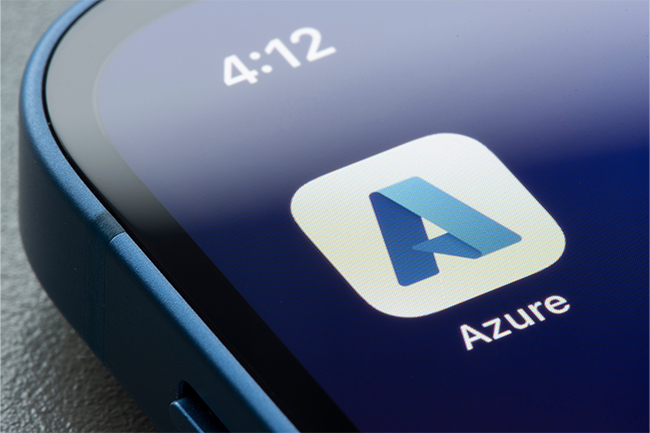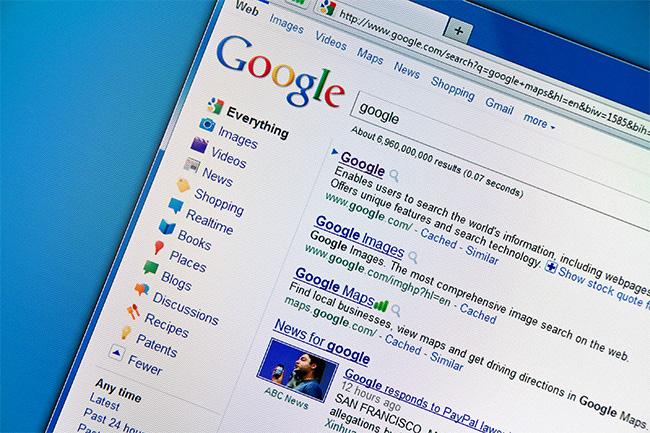
Pay-per-click (PPC) can be a very effective advertising tool to help ensure potential customers can find your business quickly when searching online. Because it is so robust, it can also be very daunting if you aren’t sure which channel is right for your business or how best to execute your campaigns. We’ve put together this quick reference guide with an explanation of top advertising channels and best practices.
Best Pay-Per-Click Practices On Google
Google is synonymous with searching online and oftentimes the first channel people think of when deciding to run PPC campaigns. It’s also easy to blow through your budget if you are not careful.
Google PPC Campaign Setup
Google Ads (formerly Google AdWords) is known for its automation techniques that help marketers manage their campaigns with ease. Over the years, Google continues to shift toward AI and machine learning across the board and its ad platform is no exception. When setting up your campaign, you can pick from several campaign optimization strategies that use smart bidding from Google’s algorithm to help your campaign achieve optimal performance based on your goals.
If you are going the smart bidding route, it’s wise to choose your strategy at the start of the campaign which can be based on whether you’re trying to get conversions, achieve a set ROI, build brand awareness for your business, and more.
Depending on your goals, we often recommend starting out with a smart bidding strategy of Max Clicks to gain data and insights quickly. With Max Clicks, you are telling Google what you care about most is visits to your website. Even if that is not your ultimate goal, and typically it is not for most of our clients, your ads will initially show more often so they can collect data on which people are likely to click on your ad, and determine which clicks end up leading to conversions (which is usually the ultimate goal.)
Once you implement this strategy for a few weeks, or whenever Google has enough conversion data, we often recommend switching the campaigns’ smart bidding strategy to Max Conversions so that Google will focus on showing your ads to users who are more likely to convert.
Max Clicks Strategy - Be Vigilant
When using an automated bidding strategy, Google has control of setting the bids you pay per click. To ensure that you don’t pay more for clicks than your budget allows, the Max Clicks strategy comes with an option to set a max cost-per-click (CPC) limit. This feature can help to ensure you’re optimizing your bids to show your ads frequently enough while still not overspending your budget. You can set different max CPCs for each campaign to align your bids and ad spend appropriately for each category of services that you offer.
When To Use Max Conversions Strategy
Once you switch your campaign optimization strategy to Max Conversions, Google will use its machine learning to show your ads more often to people who are likely to take an action on your website that you have determined to be a conversion after clicking on your PPC ad. When using this strategy, it’s best to keep an eye on your cost-per-acquisition (CPA) to make sure your stats stay in line with your goals. Again, Google determines your bids with any smart bidding strategy. If your CPA rises above what you want to pay/is considered profitable, you have the option of setting up a Target CPA (TCPA). This feature is recommended because it lets Google know what range to keep your CPA in.
Creating Ads For Google Paid Search
When it comes to creating ads for search campaigns, there are different types of PPC ad styles you can choose from currently. Each ad group should receive a few different ads to make sure you can capture the right traffic. It is recommended to have three to four ads per ad group and typically one responsive search ad (RSA) and two to three Expanded Text Ads (ETAs) in each group. Please note, Google is sunsetting ETAs in July 2022 so you will only be able to create RSAs past that point. You also won’t be able to edit past ETAs but you will still be able to run them and see performance as long as they are in the campaigns before June 30, 2022. Recently, Google made a change to default to RSAs so we knew this was coming.
When creating any ads, ensure your landing pages reflect the target keywords in each ad group so you can maintain a high-quality score on each ad, helping Google trust that your ads are relevant and show them more often. Plus, this can help to keep your CPC lower.
Responsive Search Ads (RSAs)
RSAs are one of Google’s newer forms of ads, which launched in 2018. The idea behind RSAs is to have several headlines and descriptions so that Google can determine the best combination to show a user based on their search query. RSA help you enter more auctions. Responsive Search Ads allow you to come up with options for up to 15 headlines and four descriptions. When an RSA is displayed online, only three headlines and two descriptions will show, which allows Google’s machine learning technology to decide which options of ad text they will show to get the best results for your campaign/be most relevant to the user’s search query.
Since Google’s automation and machine learning can pick what it determines to be the most relevant headlines and descriptions for each ad that is displayed, it’s best to make sure your headlines and descriptions vary so that Google has different options to choose from. By using different keywords and selling points, Google can select the options that best match the user’s search intent. If you have similar headlines and descriptions or repeat any ad copy, you run the risk of the ad being repetitive so it’s important to make each headline and description different. Any combination can be used at any time.
If you’re not sure if your ad copy has enough keyword variation, Google provides you with the Ad Strength of each Responsive Search Ad. Google uses a scale to rate each RSA, so you’ll want to try to get each ad to achieve an ad strength of “Excellent” or “Good” while creating or editing your ads.
Because Google is not allowing new ETAs to be created soon, we won’t go into more detail about them. However, if you are interested, our handy checklist on High-Performing Google Ads we previously wrote has a lot of information on best practices.
Ad Features: Extensions And Settings For Optimal Performance
After setting up your ad groups and ads, there are several features you will want to add or set to help you improve your click-through rates, conversion rates, and more.
Ad Extensions
Ad Extensions such as Sitelinks, Callouts, Call Extensions, Location Extensions, and Structured Snippets all help add value to your ad campaign. These extensions can aid searchers in easily identifying which services or products you offer, compel them to click on your ad versus your competitor, and provide an easy way to contact your business.
Call Extensions, for example, show your phone number on the ad itself. This removes the extra step to visit your website if the user already knows they want to call you. This is especially beneficial to mobile users as they can simply click on your telephone number directly from the ad. The additional calls to action (CTAs) in your Callout Extensions can help improve click-through rates (CTRs) by giving users reasons to visit your site. You can even add Location Extensions and connect them to your Google Business Profile (formerly Google My Business or GMB) so that your ads show in the map section of search as well. We go into great detail about various Google ad extension types in our Google PPC campaigns guide.
Campaign Features and Settings
Once your ads are set up, it’s important to make sure you update settings like locations where you want your ads to show (or exclude), ad schedules and negative keyword lists. These can be updated based on performance so your ads are only running during the times of day when people are likely to contact you, and negative keywords are imperative so that your ads don’t show to unqualified traffic/irrelevant searches. We typically will not recommend setting an ad schedule to start out because oftentimes users may be doing searches after your business hours but you likely still want them to see your ads if they can fill out a contact form, schedule service or leave a message/reach someone after hours.
As your paid ads continue to run, you can update your settings to maintain optimal performance. Regularly monitoring your search term report will show you what people have typed into Google that triggered your ads. Anything not applicable to your business can be added to your negative keyword list so your ads have a better chance of showing to the right users who would likely be interested in your service or products.
Bing/Microsoft Ads Pay-Per-Click Strategies
Microsoft Ads, formerly Bing, can be a terrific complement to Google Ads for your PPC strategy. As a search engine, the Bing/Microsoft Ads PPC platform follows similar rules to Google. When developing your marketing strategy, optimizing for Google can also help you succeed on Microsoft Ads. You can even easily export all your campaigns from Google to Microsoft Ads. The main difference with Microsoft Ads compared to Google is that Bing typically has a smaller audience and an older demographic, which can cause a shift in your metrics. It also can skew toward desktop users. Because the audience is smaller, there is less competition when running PPC ads against your competitors. This reduction in companies bidding for certain keywords means you can get clicks for a lower CPC, which can help improve your CPA, making Microsoft Ads a valuable addition to your PPC marketing efforts.
When setting up your campaigns, you can keep the same structure that you set up for your Google PPC campaigns, but be careful with any automated bidding strategies. You’ll also need to set up different tracking for Microsoft Ads than Google.
Depending on your target audience, you can determine if adding Microsoft Ads to your PPC strategy is best for your business. With more PCs making Bing the default search engine on their browsers, Bing/Microsoft Ads continues to grow in popularity.
Facebook Ads and Social Media Marketing Strategies
Social Media PPC campaigns can be a great way to target specific demographics. Rather than targeting keywords, you can target people who are likely to be interested in your company or brand.
Social Media Ads Audience Creation
When advertising on social media platforms such as Facebook or LinkedIn, you target people based on interests, age, gender, income levels, education, and more. Since social media doesn't target people searching for specific keywords, your PPC ads need to be able to quickly capture the user's attention. It's best to keep your text short and to the point, with a strong call to action.
On top of targeting specific users and their interests, Facebook/Instagram also can target users by email address. This is a helpful remarketing/retargeting strategy so that you can stay top of mind for users who have already purchased from you and reinforce your brand to retain them. On top of targeting your current customers, Facebook also allows you to create lookalike audiences where they target profiles similar to those who have purchased from you in the past. By targeting these specific people, you can help increase conversion rates and engagement on your Facebook ads.
Facebook Ad Creative
When trying to capture an audience on Facebook, it's best to include an image, video, or gif in your ad. Video ads and gifs typically result in more engagement from your audience. If using a photo, the less text the better. If using a video, a vertical orientation is preferred so that it can easily be formatted for stories and used on both Facebook and Instagram.
Until recently, Facebook did not allow text overlays to take up more than 20% of an image. Despite this regulation going away, it's still recommended to keep your text limited. Photos with fewer text overlays have been proven to perform better, as people immediately associate photos with a lot of text with ads, and are more likely to ignore them. Keeping it simple is better for retention, so adding your logo is recommended for branding, but we advise other text should not be added to a photo before running your ad.
Getting The Most Out Of Your PPC Campaigns
Regardless of which advertising platform you decide is best for you, it's important to know the differences so you can develop the PPC strategy that will benefit your business the most. Whether people are searching for your services or just browsing social media, you want your business to stay in front of your potential customers and your ads to appear anywhere a potential customer could be searching. Using paid advertising across all platforms helps ensure that your brand will be seen, and complement your marketing by gaining the trust of your audience.


